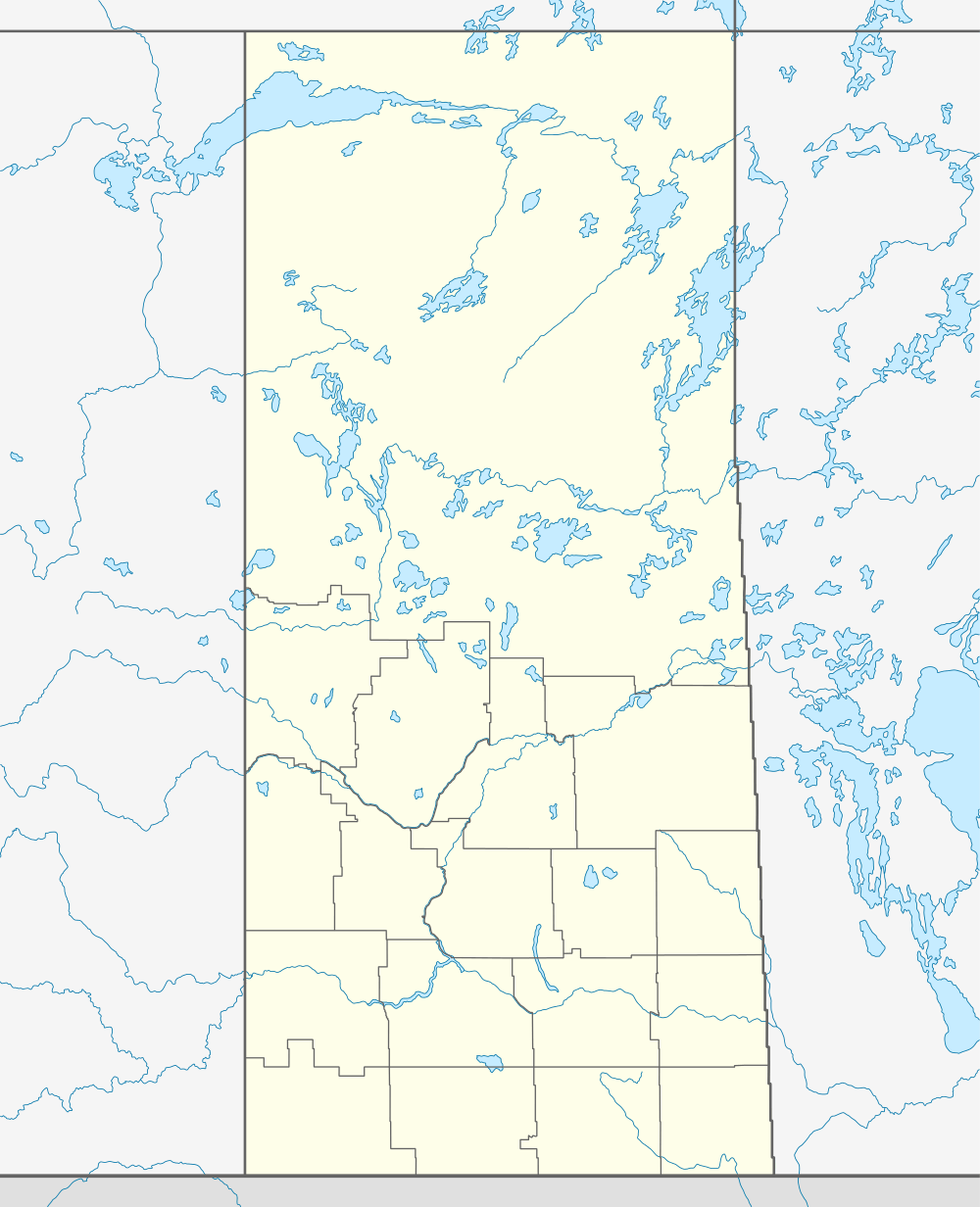Cigar Lake Mine
.png) | |
| Location | |
|---|---|
 Cigar Lake Mine Location in Saskatchewan | |
| Location | Athabasca Basin |
| Province | Saskatchewan |
| Country | Canada |
| Coordinates | 58°04′07″N 104°32′26″W / 58.06861°N 104.54056°WCoordinates: 58°04′07″N 104°32′26″W / 58.06861°N 104.54056°W |
| Production | |
| Products | Uranium |
| History | |
| Opened | 2014 |
| Owner | |
| Company | Cameco(50%), AREVA(37%), Idemitsu (8%), and TEPCO (5%) |
| Year of acquisition | 1981 (discovery) |
The Cigar Lake Mine is the largest undeveloped high grade uranium deposit in the world, located in the uranium rich Athabasca Basin of northern Saskatchewan, Canada.
The deposit, discovered in 1981, is second in size of high-grade deposits only to the McArthur River mine. Other deposits, such as Olympic Dam in Australia, contain more uranium, but not at the significant grades of the Saskatchewan deposits. The average grade at Cigar Lake is in excess of 20%, whereas the world average is less than 1%.
Full scale construction began in 2005 with production originally planned for 2007, but the mine experienced a catastrophic water inflow in October 2006, which flooded the mine. A second inflow occurred in 2008 during the first attempt at dewatering the mine after sealing the initial inflow. Remediation efforts continued, and re-entry was successfully accomplished in 2010. Production has been delayed several times with the startup dates being announced for 2011,[1] 2013,[2] and 2014.[3]
It has been suggested that the 2006 flood was a direct cause of the uranium bubble of 2007, which caused the natural uranium spot price to reach a record high of $137/lb ($300/kgU).[4][5] On March 13, 2014, ore production began at the Cigar Lake uranium mining operation in northern Saskatchewan. As of this date, the mining system and underground processing circuits are operational and ore is being transported to the McClean Lake mill operated by AREVA Resources Canada Inc. which is located 70 km (43 mi) northeast of the minesite.[6]
Reserves
As of December 31, 2011, the mine has proven and probable reserves of 537,100 tonnes at an average grade of 18.3% U3O8.[7] (216.7 Million pounds U3O8)
Ownership
The mine is owned by Cameco Corporation (50%), AREVA Resources Canada Inc (37%), Idemitsu Canada Resources Ltd. (8%), and TEPCO Resources Inc. (5%). Cameco is the project operator.
Wolf attack
On August 29, 2016, an unidentified young contract worker on his midnight break was jumped and mauled by a lone wolf less than 100 m (330 ft) from Cigar Lake's main campsite. A nearby female security guard frightened the wolf away, administered first aid, and called for an air ambulance which airlifted him 675 km (419 mi) to a hospital in Saskatoon where he had his recovery. After the attack, authorities ordered that area wolves be shot, that food disposal systems and fencing be inspected, and that staff be educated.[8]
See also
- Uranium market
- Unconformity uranium deposits
- Deep geological repository
- Cigar Lake Airport
- Cluff Lake mine
- Key Lake mine
- McClean Lake mine
- Rabbit Lake mine
References
- ↑ "Cigar Lake floods again". Nuclear Engineering International. August 22, 2008. Archived from the original on 2011-06-13. Retrieved 2008-09-01.
- ↑ Bosker, Brent (March 2, 2012). "Cameco revises timeline for Cigar Lake". Rawlco Communications. Retrieved 2012-03-02.
- ↑ "Cameco to miss 2013 target for Cigar Lake uranium project due to startup delays". The StarPhoenix. Postmedia Network. The Canadian Press. 2013-09-09. Retrieved 2013-09-09.
- ↑ Locantro, Tony (July 19, 2005). "Uranium Bubble & Spec Market Outlook". Goldseek.com. Retrieved 2012-03-02.
- ↑ Mickey, Andrew (August 22, 2008). "Uranium Has Bottomed: Two Uranium Bulls to Jump on Now". UraniumSeek.com. Retrieved 2009-11-23.
- ↑ "Cameco Announces Start of Ore Production at Cigar Lake Mine". Archived from the original on March 13, 2014. Retrieved March 13, 2014.
- ↑ "Annual Report 2013- Mineral Reserves". Cameco. Retrieved 2014-06-09.
- ↑ Wolf expert says human habituation likely reason for Cigar Lake attack